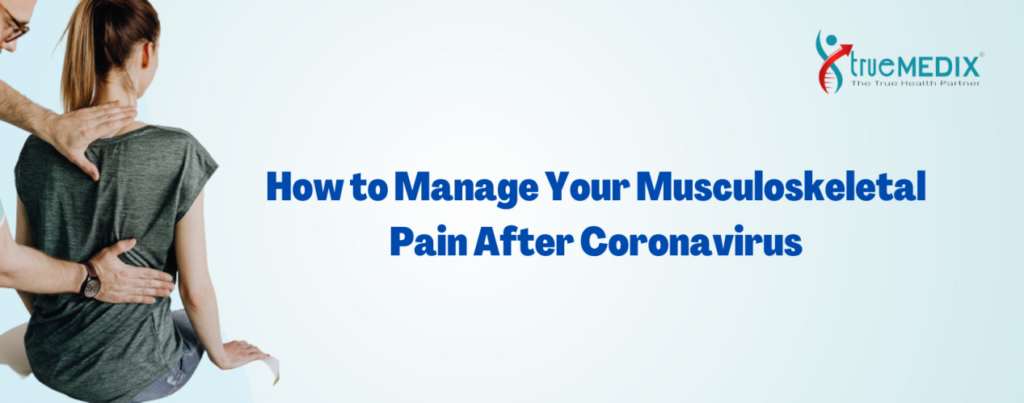
Are you one of the millions of people who are experiencing musculoskeletal pain after contracting coronavirus? If so, you’re not alone. Many people who have had COVID-19 have reported aches and pains in their muscles and joints that can be quite severe. In this blog post, we’ll provide you with some tips and advice for managing your musculoskeletal pain so you can get back to your normal routine and activities.
Get Plenty of Rest :
One of the best ways to manage musculoskeletal pain after coronavirus is to get plenty of rest. Rest can help your body heal and repair itself, which can be especially important if you’ve been dealing with any kind of muscle or joint pain. Aim for at least 8 hours of sleep a night. If you need more than that, don’t be afraid to take naps or rest during the day as well.
Additionally, try to avoid strenuous activities or anything else that may make your pain worse. The key here is to give your body the chance to recover from whatever damage the virus has caused.
Take Anti-inflammatory Medications :
One of the best ways to manage musculoskeletal pain after COVID is to take anti-inflammatory medications. Anti-inflammatory medications are drugs that reduce inflammation in the body, which helps to reduce pain and swelling. Common anti-inflammatory medications include ibuprofen, aspirin, naproxen, and acetaminophen.
It’s important to talk to your doctor before taking any anti-inflammatory medications, as some of these drugs can have side effects if taken in large doses or for an extended period of time. If you do decide to take anti-inflammatory medications, be sure to follow the dosage instructions on the bottle and consult with your doctor if you experience any adverse reactions.
Do Low-Impact Exercise :
Exercising can be an effective way to manage musculoskeletal pain. Low-impact exercises are especially beneficial, as they are gentler on your joints and muscles. Examples of low-impact exercises include walking, swimming, cycling, and yoga.
Walking is a great way to get some exercise, as it does not put too much pressure on your joints or muscles. Start with short walks at a comfortable pace, and gradually increase the length and intensity of your walks as your body adapts.
Swimming and Cycling is an excellent way to get physical activity while relieving pressure on your joints. Start with shallow swimming and take breaks as needed. As you become more comfortable with swimming and cycling , increase the distance and intensity.
Yoga is a form of exercise that helps to improve flexibility and strength without putting too much strain on the body.
Use Heat and Ice :
Heat and cold treatments can be very effective in reducing the pain associated with musculoskeletal problems. Both treatments help to reduce swelling and stiffness in the affected area. Heat can increase circulation to the area and help relax tight muscles, while cold can numb nerve endings and reduce inflammation.
If you’re using heat or cold, it’s important to make sure you use the right temperature for your needs. For heat, the best temperature is usually between 105-115 degrees Fahrenheit. For cold, try temperatures below 50 degrees Fahrenheit. Additionally, always follow package instructions and take appropriate precautions when using any type of heating or cooling device.
Heat therapy can be used in a variety of ways, including hot baths, heating pads, and hot compresses. Cold therapy can also be used in a variety of ways, including ice packs, cold baths, and cold compresses. Make sure to apply heat or cold for no longer than 20 minutes at a time and take breaks between applications.
Using heat and/or cold therapy can help reduce the pain associated with musculoskeletal issues, but always check with your doctor before starting any kind of heat or cold therapy to make sure it’s safe for you.
See a Physical Therapist
If your musculoskeletal pain persists and doesn’t respond to the above treatments, it’s important to consider seeing a physical therapist. Physical therapy can provide comprehensive treatment plans tailored to each individual that aim to reduce pain and improve mobility.
Physical therapists can use a variety of methods to treat musculoskeletal pain after COVID. They may use manual therapy techniques such as joint mobilization, soft tissue massage, stretching, and myofascial release.
They also may use therapeutic exercise to help strengthen weak areas, improve range of motion, and increase endurance. Your physical therapist may also suggest lifestyle changes such as posture correction and activity modification that can reduce your pain and improve your quality of life.






